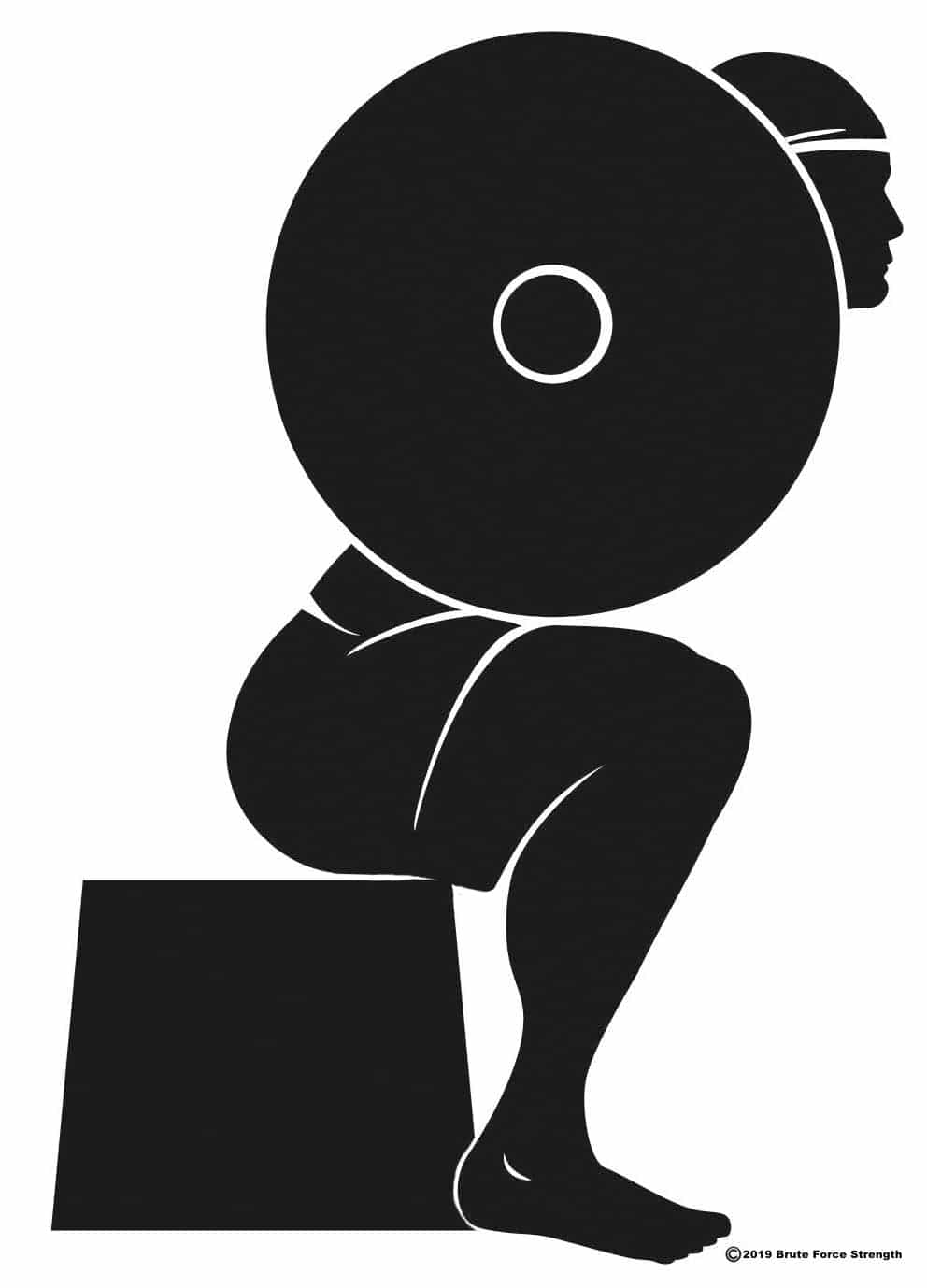Ever Wonder Why People Box Squat?
Box squats are a great way to change up your workout a little bit to emphasize different muscle groups while still working similar movement patterns. In this article we’ll talk about how to perform a box squat properly and why it’s beneficial to add into your routine.
How do you perform a box squat properly?
You can perform box squats with a barbell using heavier weights and make them the main movement of your workout for a day, or you can add them in as an accessory lift and use a light kettlebell or dumbbell to help emphasize certain parts of the squat movement and improve strength of certain muscle groups. Generally when setting up the box you want to pick a height that is low enough so that you can squat to a depth of 90 degrees, meaning your knee is bent to 90 degrees at the bottom of the movement. This allows you to control your depth and maintain good form throughout the movement.
Here’s an example of a good box height:

What are the benefits?
Box squats have many benefits and can be a great addition to your workout program if you’re looking to improve glute strength, improve your power accelerating out of the bottom of a squat, decrease joint pain and improve muscle imbalances.
Let’s take a look at how box squats can help improve glute strength and power out of the hole. When using a box, it forces you to pause briefly at the bottom of your squat and then re-engage your glutes to perform the concentric movement of a squat. This allows for better glute engagement throughout the movement as well as improved ability to hit depth and get back up. Using a box also forces you to sit further back in your squat which again increases your glute engagement. Box squats can be extremely helpful if you feel like you struggle at the bottom of your squat.
A box squat can also help to decrease joint pain by limiting how deep you squat and improving knee, hip and ankle joint angles to decrease strain. Most people when performing a regular squat tend to have an increased tibial angle, meaning their knee is moving further forward over your toes. This results in increased anterior strain on the knee which can cause pain over the knee cap. It also results in increased forward flexion at the bottom of the squat which can increase stress on the lumbar spine. Box squats facilitate a decreased tibial angle, relieving stress on these joints especially as you get down to the bottom of your squat.
Here you can see the increased joint angles in a regular back squat vs the box squat:


Lastly, box squats can help improve muscle imbalance by facilitating a more symmetrical lift with equal muscle engagement on each side of your body (bilaterally). For me, as I mentioned, I have scoliosis and some other lingering issues from various injuries over the years including torn ACLs and broken ankles. For those of you that saw my instagram post, you can see the lateral shift in my squat and how the bar leans to one side. I have some weakness in my left glute and difficulty engaging my left side, especially at the bottom of my squat. Box squats help me to keep my hips even throughout the movement and I feel increased glute engagement on my left side when using the box.
To sum it all up, I love to add box squats into my workouts frequently because they feel good and they have some really great benefits! Hopefully this article gave you some good information and if you have any questions feel free to reach out! Check back in for more info soon and check out my instagram @dr.jess.dpt. Thanks for visiting!